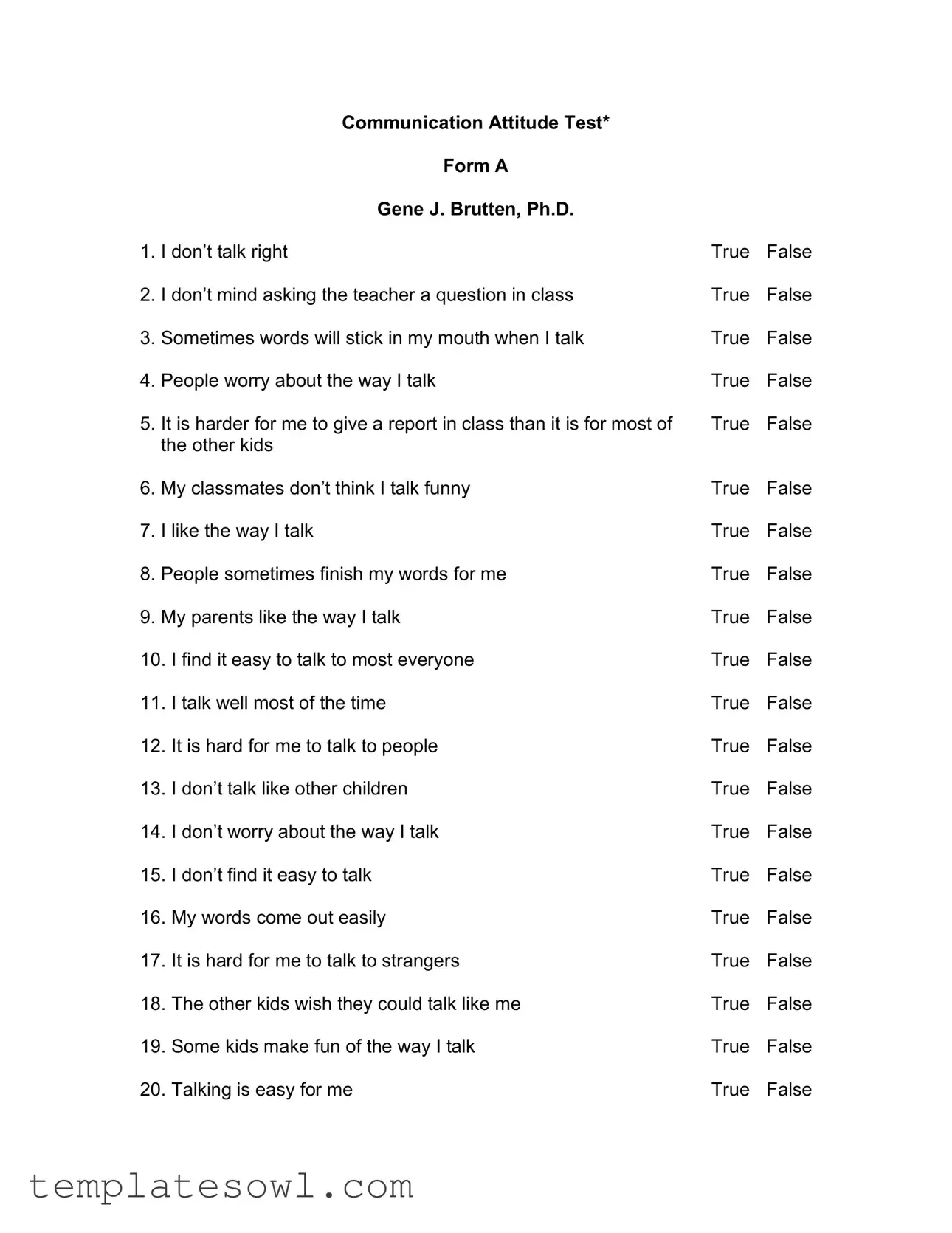What is the Communication Attitude Test A Form?
The Communication Attitude Test A Form is a self-assessment tool developed by Dr. Gene J. Brutten. It helps individuals, particularly children, evaluate their feelings and attitudes towards speaking and communication. The test consists of a series of statements that respondents answer with "True" or "False," reflecting their personal experiences and perceptions about their communication abilities.
Who can take the Communication Attitude Test A Form?
This test is designed primarily for children and adolescents. It can be used by teachers, speech-language pathologists, and parents to understand a child's comfort level and confidence in speaking. However, it may also be applicable to adults who wish to assess their own communication attitudes.
How is the test administered?
The test can be given individually or in a group setting. Participants read the statements and indicate whether each one is true or false in relation to their personal feelings about talking and communication. It is often beneficial to have an adult present to explain the purpose of the test and to provide support during the administration.
What do the results indicate?
The responses can provide insights into a person's communication attitudes. A higher number of "True" responses may indicate feelings of discomfort, anxiety, or negative self-perception regarding speaking skills. Conversely, more "False" responses may suggest a positive attitude towards talking and communication. These results can guide further conversations about communication needs or potential interventions.
Can the test help identify speech issues?
While the Communication Attitude Test A Form itself does not diagnose speech disorders, it can highlight areas where a child may be struggling with their communication. If the results indicate significant concerns, further evaluation by a qualified professional, such as a speech-language pathologist, may be recommended to assess any underlying speech or language issues and provide appropriate support.
Is there a cost associated with the Communication Attitude Test A Form?
The Communication Attitude Test A Form is copyrighted material, which may mean that a fee is associated with obtaining and using the test. It’s advisable to check with authorized distributors or professional organizations for availability and pricing. Understanding any associated costs before proceeding is essential to ensure access to the necessary resources.
